CPSC 558 - Scripting for Data Science, Fall 2024,
Thursday 6:00-8:50 PM, Old Main 158 .
Assignment 2 is due via D2L Assignment 2 drop box by TBD.
Use Firefox or try other non-Chrome browser for these links.
Chrome has problems.
Download & install
Weka 3.8.6 (latest stable 3.8) from the website per our
course page.
Then download handout files CSC223f24FRQDassn2.arff.gz
and
README_558_Assn2.txt.
We are using data generated by an upcoming CPSC223 project, hence
the file name.
You may need to control-click the README_558_Assn2.txt link in
order to save it.
The former contains the starting data for this assignment and the
latter has questions you must answer.
Place these files in a directory (folder) with the assignment
name, e.g., CSC558Assn2.
You will turn in the following files via D2L Assignment 2 after
completing the assignment per steps below.
README_558_Assn2.txt contains your answers. Make sure to use a
text file format, not Word or other format.
When you have finished and checked your work:
Include these 3 files including README_558_Assn2.txt when you
turn in your assignment. If at all possible, please create them in
a
single directory (folder) and turn in a standard .zip file of that
folder to D2L. I can deal with turning in all individual files,
but
grading goes a lot faster if you turn in a .zip file of the
folder.
You can leave CSC223f24FRQDassn2.arff.gz in there if you want.
README_558_Assn2.txt
CSC558Assn2Wavetype.arff.gz
CSC558Assn2Dupl.arff.gz
This assignment builds on signal processing analysis begun in
CSC558
back
in spring 2020 and brought to its most recent state of
straightforward prediction in CSC458
in spring 2024,
The modified dataset used in the current assignment adds
significant, non-white-noise ambiguity to the prior
data by adding together multiple copies of a given waveform type
with differing frequencies and amplitudes. You
must analyze this more complicated dataset, both for
classification and regression. Please take notes
when I go over the predecessor data in class.
Examine Figures 1 through 18 as follows. First, look at the
waveforms
with duplication == 1 (Figures 1, 4, 7, 10, 13, 16).
These 6 waveforms are our primary waveforms. Our waveform
generator from
CPSC223 generates 1 second's worth of digital audio samples at a
standard sampling rate of
44,100 samples per second. Figures 1 through 18 show only 1 cycle
of each waveform.
From the Python generator code,
samples = math.floor(srate / freq), so with a
constant srate of 44100,
Figure 1 shows 40 samples for a fundamental frequency of 1100
Hertz (cycles per second).
Higher frequencies yield fewer samples per waveform cycle in the
data, and lower
frequencies yield more samples per waveform, as illustrated in
Figures 1 through 18.
Signal amplitudes vary in the 16-bit integer range [-32768, 32767]
per digital audio level standards.
The gain for a signal in our dataset scales this outer range down.
For example, 0.58 X 32767 = 19004 when rounded for Figure 1.
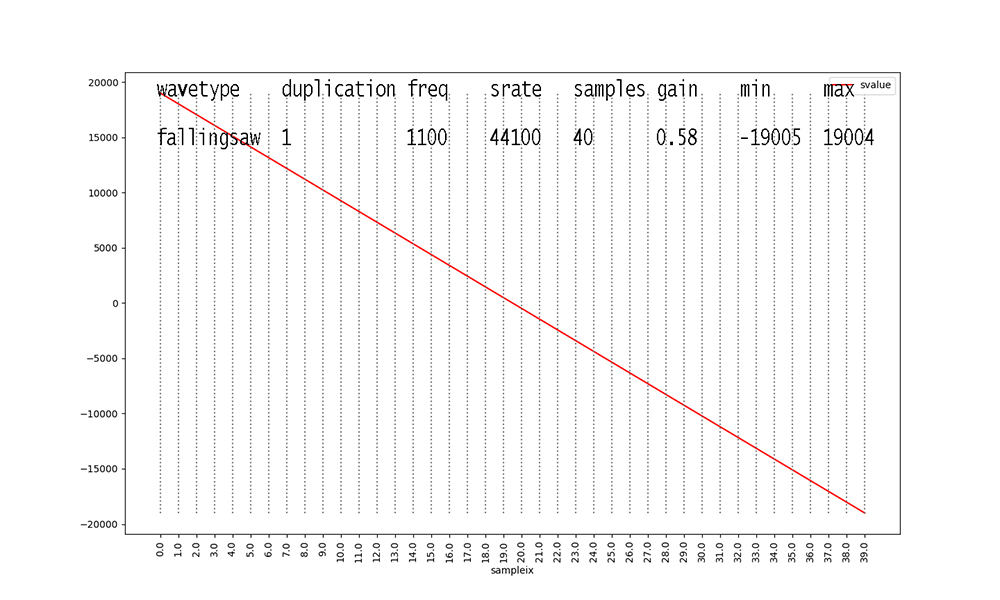
Figure 1
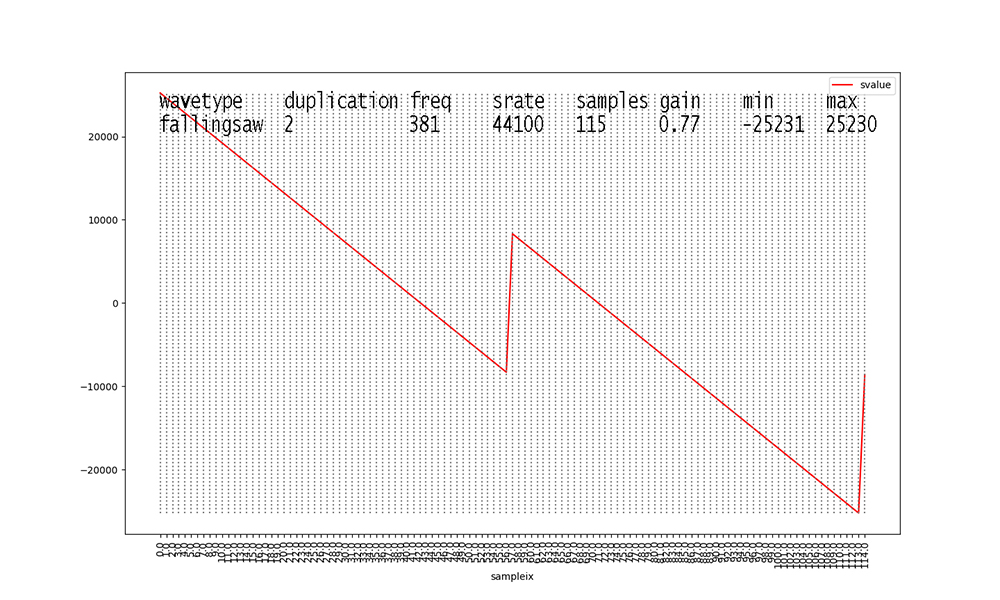
Figure 2
Figures with duplication values of 2 or 3 are new to this dataset
this semester.
I added them to inject some ambiguity into the data.
Waveforms with duplication == 2 start to make these figures and
their data analyses messy.
The original waveform with duplication == 1 is scaled down in
amplitude X 0.666 and a
second identical waveform at 2 X the frequency and 0.333 the
amplitude is added to its
samples before scaling the aggregate waveform by the stated gain.
Finally, waveforms with duplication
== 3 take the result of aggregate duplication == 2
waveforms and add another identical waveform at 3 X the original
frequency and
0.15 X the amplitude, after scaling the aggregate duplication ==
2 waveform samples
by 0.85 X their values. Scaling the aggregate waveform by the
stated gain always occurs as the final step.
These steps in duplication occur to all of the waveform types
with duplication values > 1.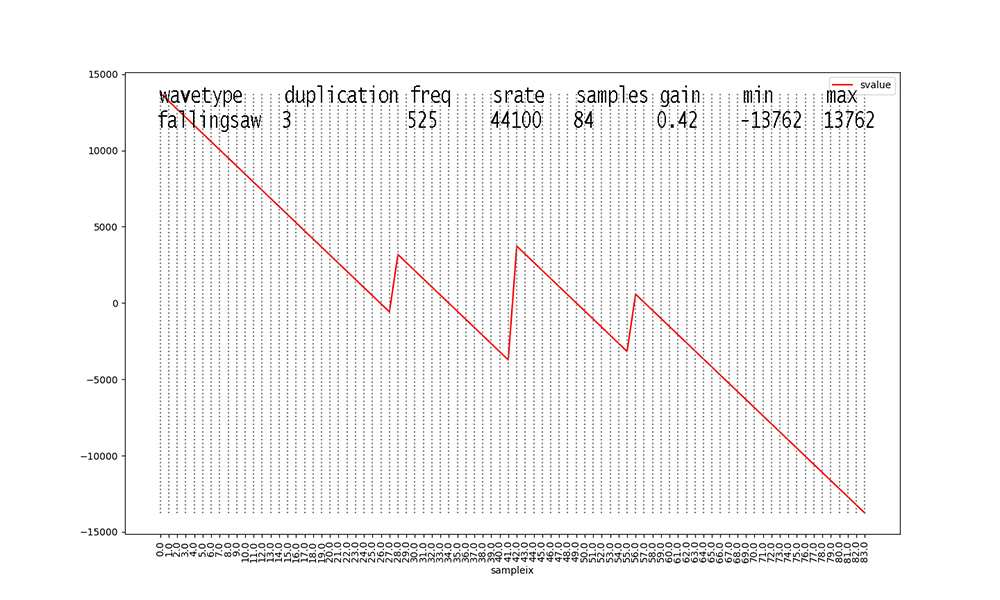
Figure 3
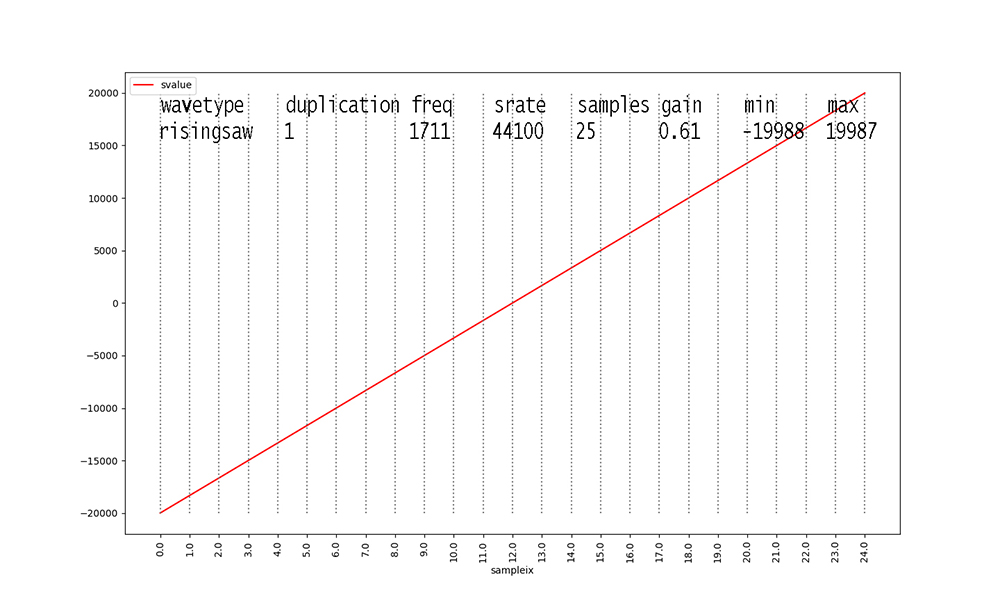
Figure 4
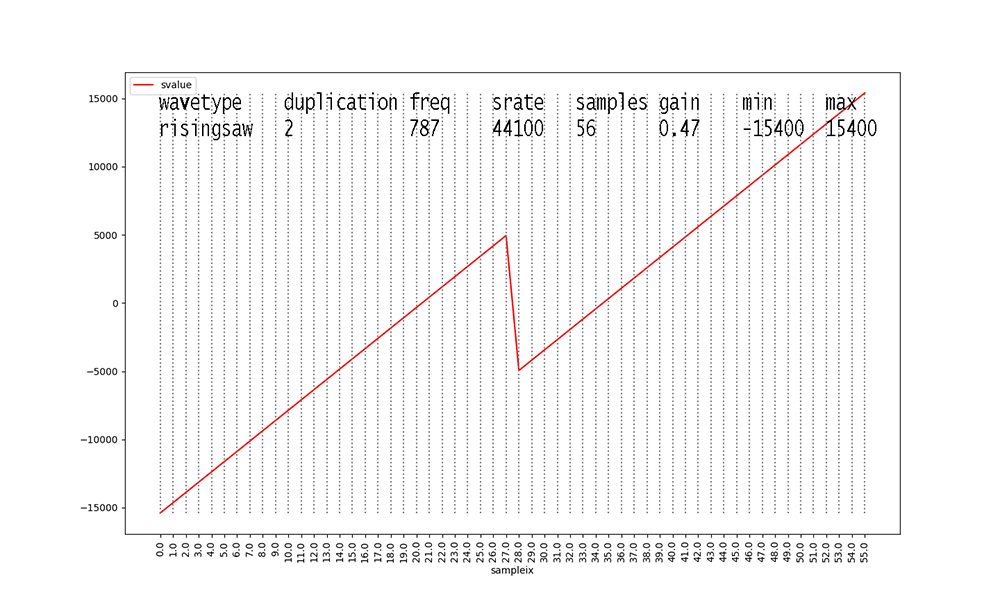
Figure 5

Figure 6
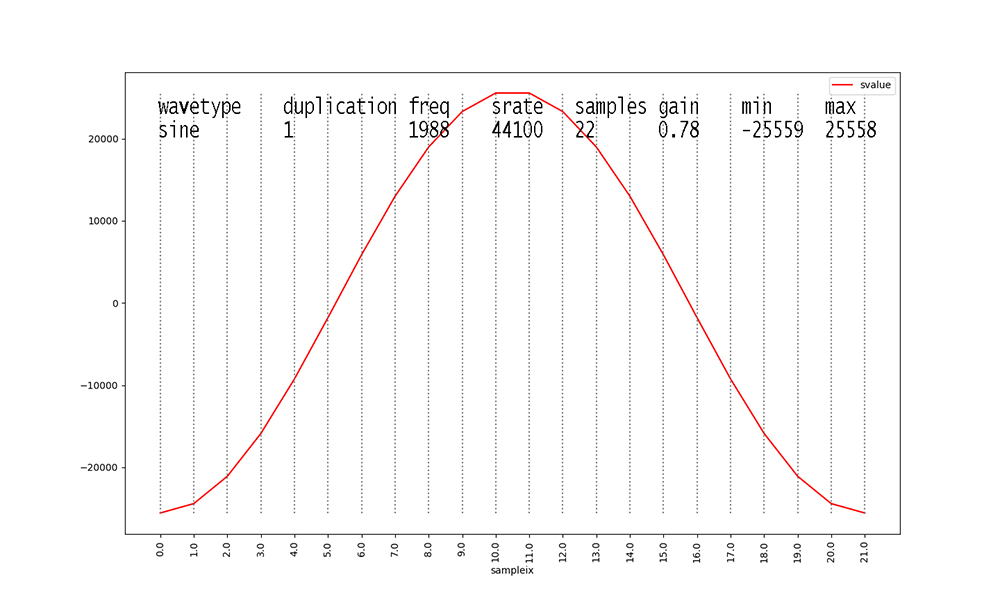
Figure 7
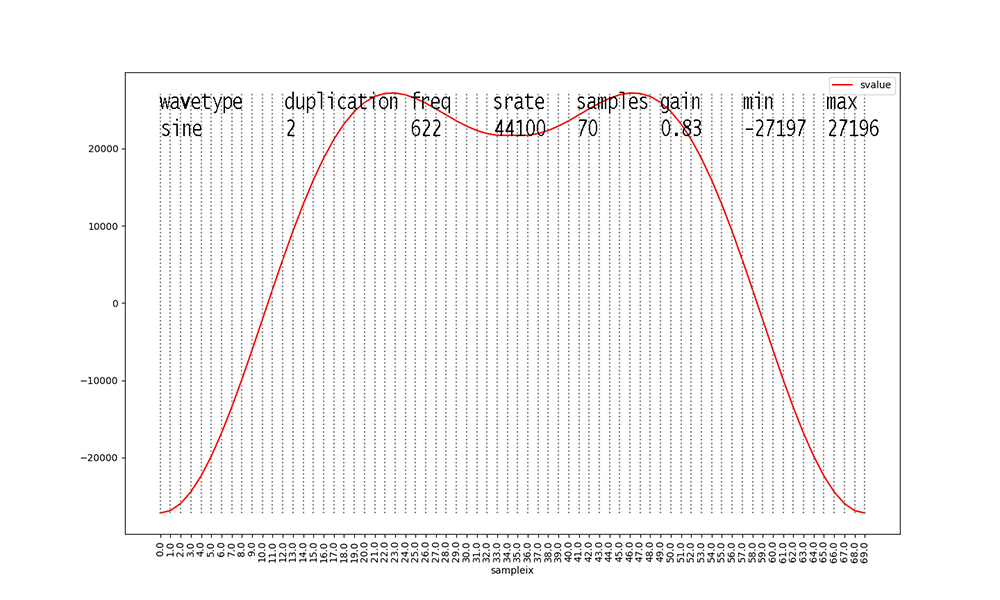
Figure 8
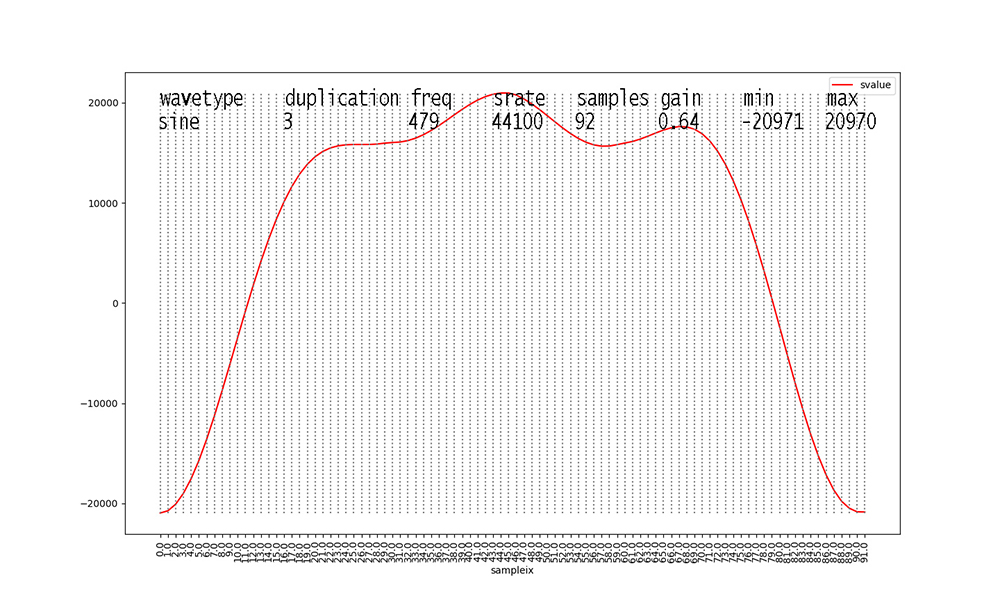
Figure 9
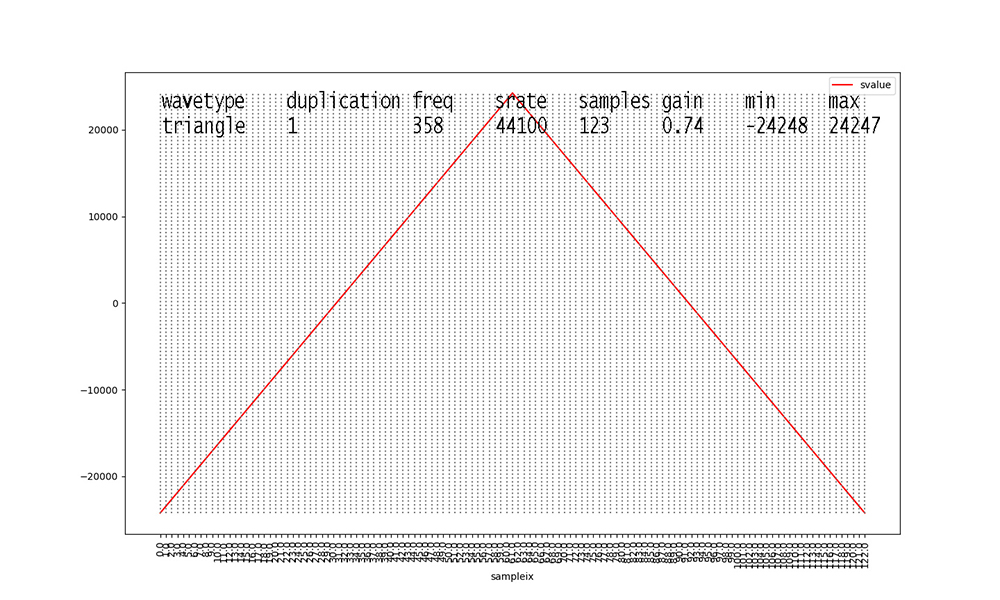
Figure 10
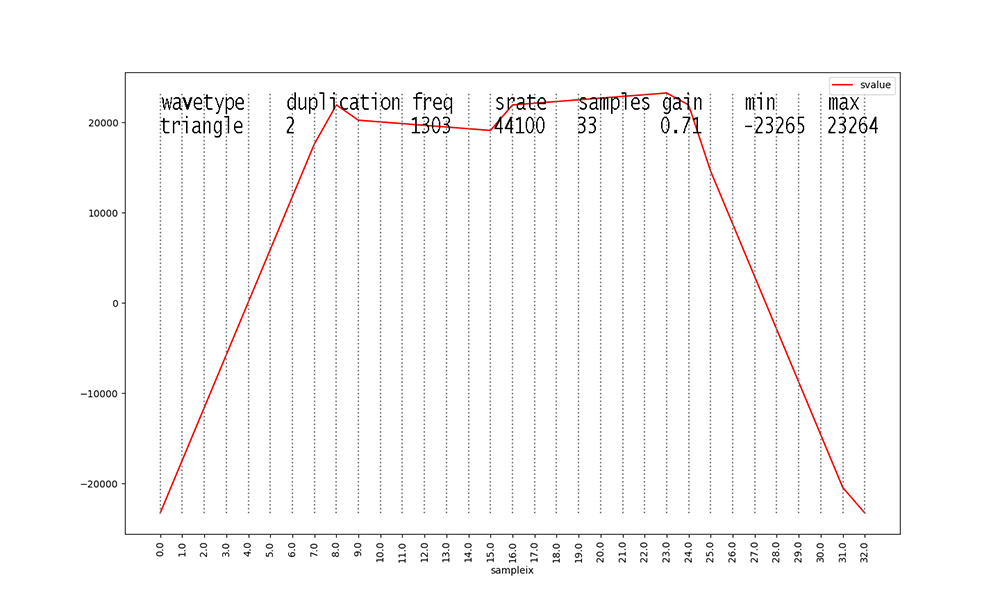
Figure 11
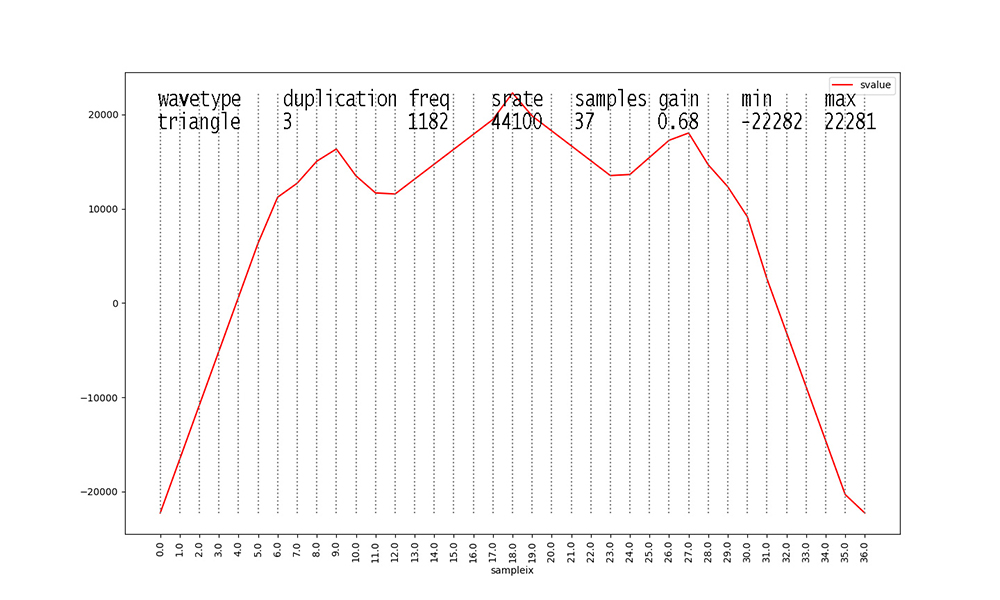
Figure 12
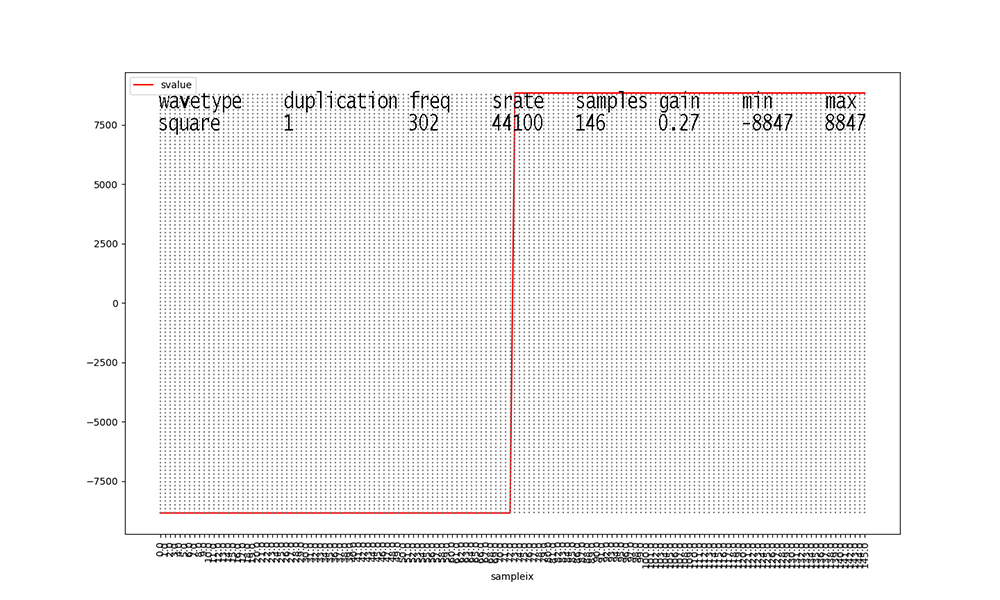
Figure 13
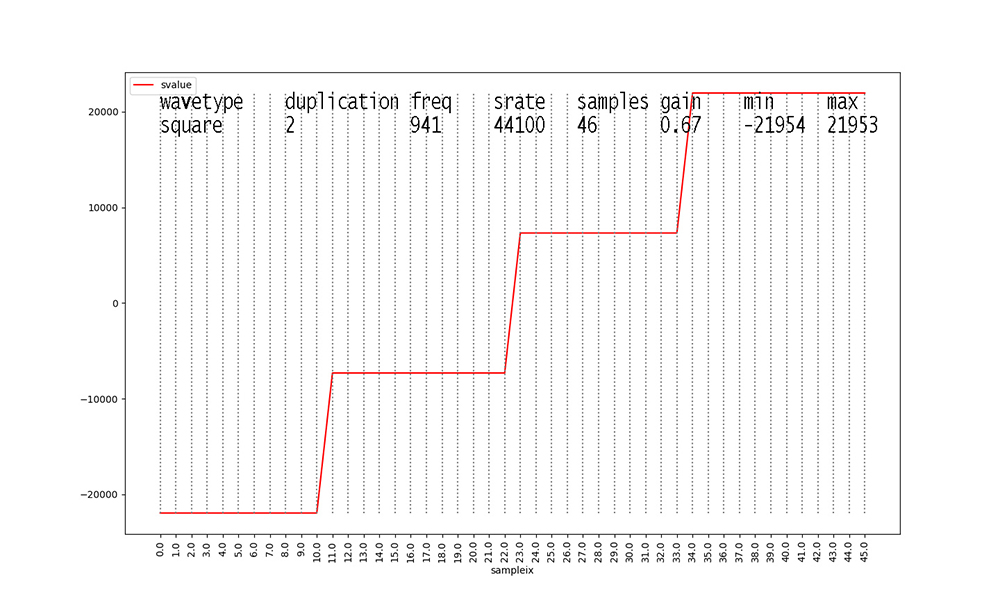
Figure 14
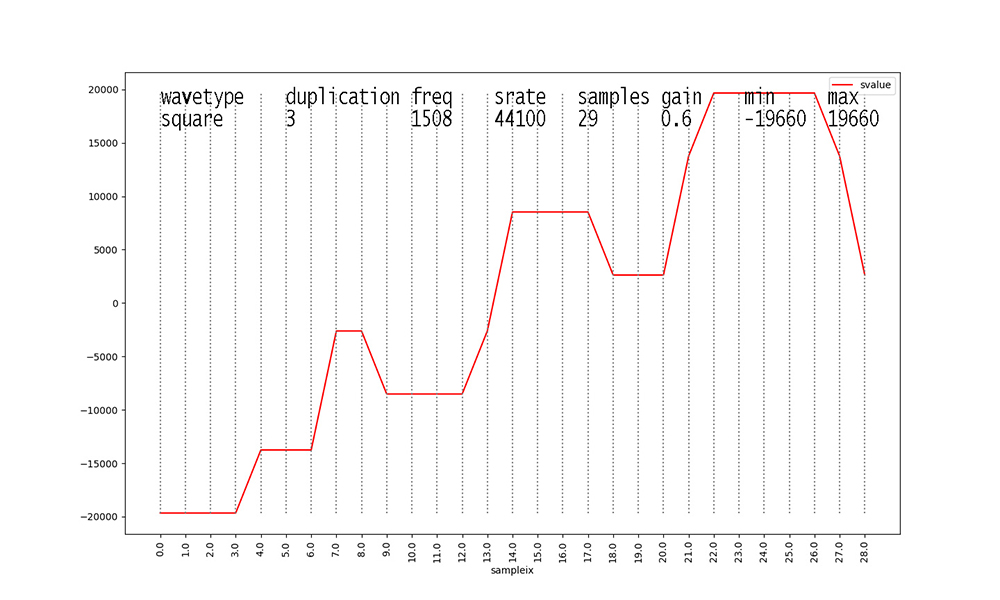
Figure 15
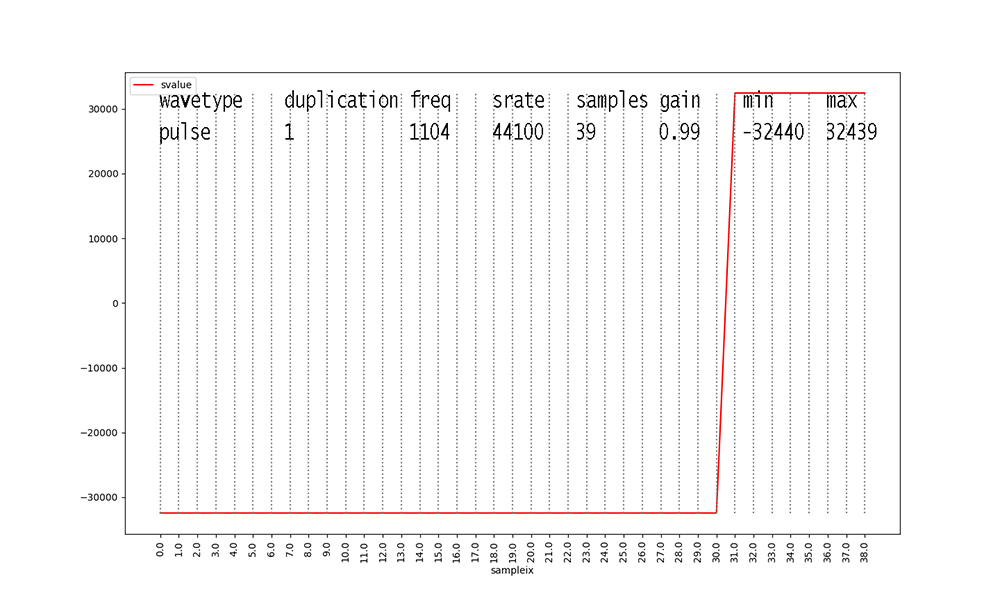
Figure 16: Our pulse wave has a 20% duty cycle. The final 20% of a
cycle's samples are high.
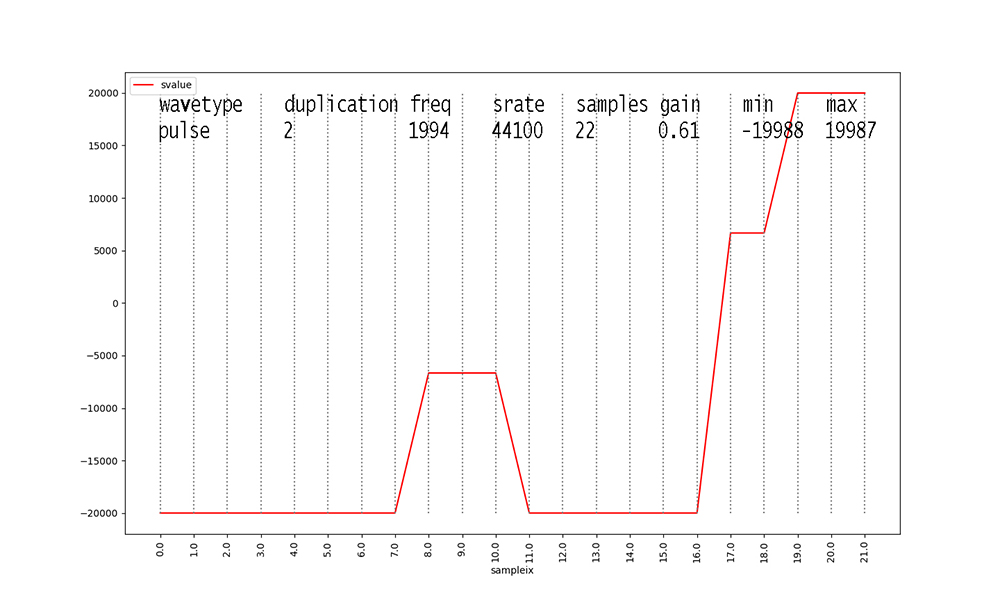
Figure 17

Figure 18
Here is a summary of the data attributes in
CSC223f24FRQDassn2.arff.gz.
ampl1
The amplitude of the frequency-domain fundamental
frequency,
normalized to the value 1.0 for all instances (rows of data).
freq1
The frequency of the frequency-domain fundamental
frequency,
normalized to the value 1.0 for all instances (rows of data).
ampl2
The second-strongest amplitude (2nd harmonic) as a
fraction of
ampl1.
freq2
The frequency of ampl2 as a multiple of ampl2.
ampl3, freq3 through ampl31, freq31 as stated above.
ampl32
The thirty-second-strongest amplitude (32nd harmonic) as a
fraction of ampl1.
freq32
The frequency of ampl32 as a multiple of ampl32.
rawampl1 Is
the actual non-normalized amplitude of the fundamental
frequency as extracted by the scipy FFT (Fast Fourier Transform)
time-to-frequency domain library.
rawfreq1 Is
the actual non-normalized frequency of the fundamental
as extracted by the FFT
time-to-frequency domain library.
THE ABOVE ATTRIBUTES ARE FROM THE FREQUENCY DOMAIN EXTRACTION OF
FFT.
THE FOLLOWING UP TO THE TAGGED ATTRIBUTES ARE FROM THE TIME
DOMAIN,
WHICH HAS DISCRETE DIGITAL AUDIO SAMPLES 44100 TIMES PER SECOND.
P0
is the leftmost sample value in this time-domain signal
reading left-to-right, small for rising waveforms, large for
falling.
P25
is the sample value 25% of the way across the
waveform going left-to-right.
P50
is the sample value 50% of the way across the waveform going
left-to-right.
P75 is the sample value 75% of the way across the waveform
going left-to-right.
P100
is the rightmost sample value in this signal reading
left-to-right.
reversals
the number of times an increasing time-domain wave's
samples reverses to decreasing or vice versa, i.e.,
direction reversals.
MIN, MAX, MEAN, PSTDEV (population standard deviation) and MEDIAN
(value in
the middle) are those statistical measures for one cycle of the
waveform.
Unlike Assignment 1, P50 is not the same as MEDIAN. In the current
assignment,
P50 is the signal sample 50% of the way across the waveform going
left-to-right
in one waveform cycle, whereas MEDIAN looks at all individual
discrete level
samples in one waveform and picks the one in the center of these
sample values.
The followed 5 are TAGGED ATTRIBUTES, i.e., meta-data tagged onto
this
dataset and not part of the actual waveform data. They are
parameters to
the wave generators.
twavetype
one of {triangle,sine,square,pulse,risingsaw,fallingsaw}
tduplication one of {1,
2, 3} as explained above for adding waves
tfreq
frequency of the fundamental sine wave component
tsrate
sampling rate, constarin of 44100 in this dataset
tgain
signal gain in the range [0.25, 1.0] as explained above
Inspect Weka's Preprocess tab showing histogram of Distribution
values
STEP 1: Load CSC223f24FRQDassn2.arff.gz
into Weka using the Preprocess ->
Open file... button.
Set file type to arff.gz as in Assignment 1.
STEP 2: Remove all tagged attributes except twavetype, leaving 78
attributes.
All Qn questions must be answered in file README_558_Assn2.txt.

















